


Downtown has no shortage of restaurants. Longtime institutions (Chinatown Inn, The Original Oyster House), Italian standards (Vallozzi’s) and numerous chain steakhouses rub real estate with spots new and old, serving Thai, Venezuelan, pizza, high-concept mashups and much, much more.
With all these options, however, the area is still waiting for the full return of patrons post pandemic shutdowns. As Con Alma general manager Aimee Marshall told us, “Downtown’s still getting there.”
Here are seven excellent reasons to get there, and get there often.
A note: As all restaurants are feeling the impact of COVID-19-related challenges (staffing, sourcing, inflation), many places have temporarily altered hours, seating and menu items.
KEY
$ = $15 and under
$$ = $15-$25
$$$ = $25-$45
$$$$ = $50 and up
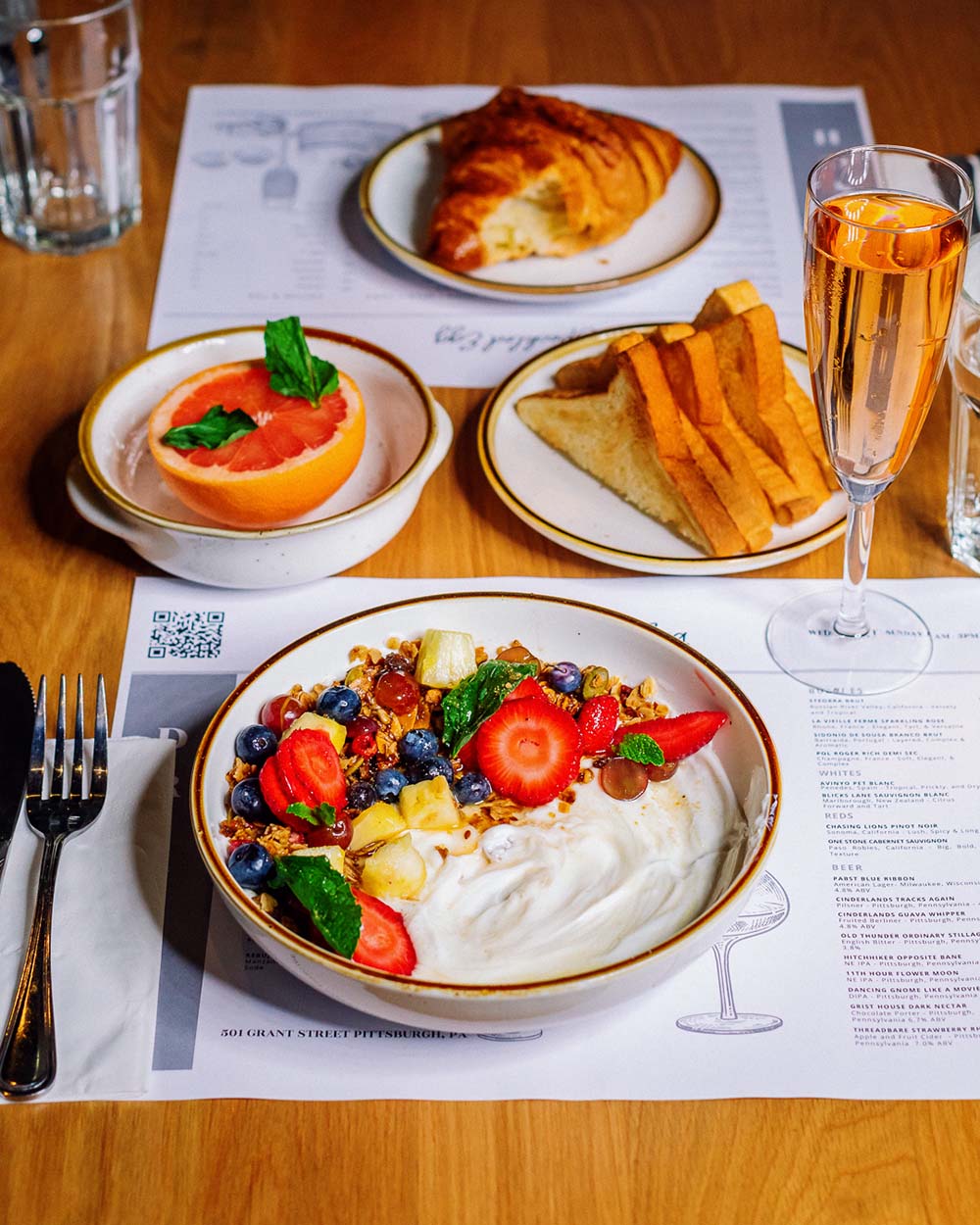
Sometimes, a restaurant’s atmosphere and its food just work seamlessly. The Speckled Egg is that restaurant. Situated in the lobby of the formidable, Flemish-Gothic-style Union Trust Building, its patrons pad across custom violet-and-blue carpeting to order what co-owner Jacqueline Schoedel describes as Pittsburgh-meets-California cuisine. Co-owner and husband Nathan is from South Park.
“My husband, he grew up here, he’s a yinzer, and he brings the fried chicken biscuit on the menu,” she says. “I’m from Ohio, but I like California dining, the light food. I like food that’s bright.”
By design, this is a place where you want to hang out, grab a cold brew (coffee or beer) and nosh on an inventive menu while sitting at the bar or one of numerous tables placed on that dramatic, plush carpeting.
The couple, who met as culinary students at the Art Institute of Pittsburgh, opened The Speckled Egg in February 2020. Its rare concept sees them serving brunch until 3 p.m. every day they’re open, currently Wednesdays through Sundays. At 4 p.m. weekdays, the menu shifts to a curated happy hour menu.
“I tell [Nathan] all the time, this concept could be done, obviously, but the way that we melded together our personalities and what we like in food, it’s what makes this work. We complement each other.”
The food: The menu offers that fried chicken-biscuit sandwich, sweetened with honey and dressed with pimento cheese. Similarly filling fare includes brown-butter French toast with strawberry-cardamom jam, and a two-patty patty melt with American and Swiss cheeses and caramelized onions. Lighter items include the Aloha Puddin’ (coconut-chia seed pudding with granola and fruit) and a turmeric chicken salad sandwich, with added crunch from almonds and celery.
A small Toasts section offers up an avocado smash (named the Millennial, but of course) and the beet-and-ricotta You Gotta Ricotta, while healthy-hearty salads include one with greens, quinoa, butternut squash and bacon lardon (up the protein by adding grilled or fried chicken). More traditional first-meal-of-the-day items: the two-egg Hen’s Hash is veggie-heavy with Brussels sprouts, broccolini and mushrooms, and the goat cheese omelet incorporates seasonal vegetables as well.
Happy hour is geared toward shareable bites — duck fat popcorn with Parmesan and peppercorn, ham-wrapped plums, beet tartare, a cheese plate — though you can also get a burger.
The drinks: A solid list of espresso beverages (you can’t order a cortado everywhere), Pittsburgh Juice Co. cold-pressed juices, kombucha, cocktails (mimosas, espresso martinis, the house Old Fashioned with bourbon and rum), wines and plenty of local beers.
501 Grant St.; thespeckledeggpgh.com


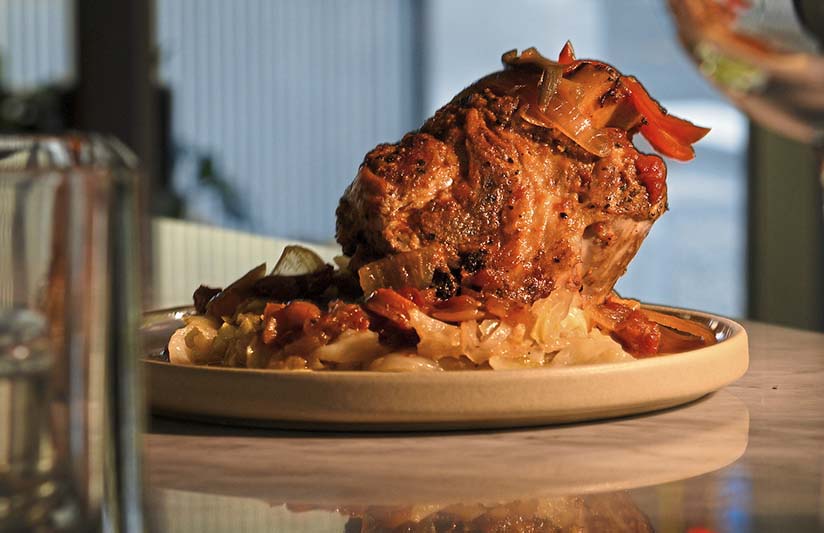
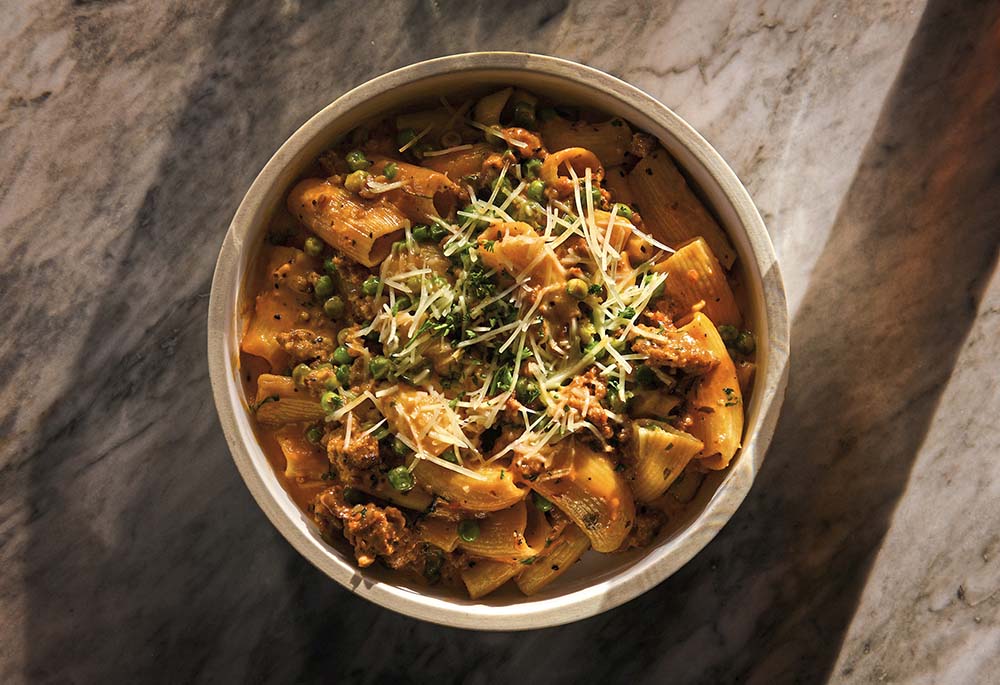

Italian dining doesn’t always have to be the traditional hours-long feast — the antipasti, the pasta, the meats, the digestif. Talia has that option when you want it, but you can also pop in for a quick, casual meal. Choices. It’s all about choices.
Talia is the second Downtown location for Julian Vallozzi, whose namesake restaurant in Market Square is itself an offshoot of the decades-old original Vallozzi’s in Greensburg. But this kid has gone its own way. Occupying an airy space in the former Alcoa Building, Talia offers diners the choice of a nip and a nosh at the marble-topped bar or following the dark hardwood floors to the main dining room and a view of the open kitchen, overseen for the past six months by chef Nick Senske (Shannopin Country Club, Lucca Ristorante), and have that leisurely meal. Or something in the middle.
It’s a matter, general manager and events director Melissa Maffel says, of responding to customers. The restaurant’s custom-made rotisserie was an anchor feature when the spot opened in 2017, and is still very much in use (current: rotisserie duck), but it’s not the star of the show. “When we first opened, that was going to be our No. 1 focus,” says Maffel. But, people like the pastas — “those are the favorites.” So the homemade rigatoni, orecchiette, etc. get the main spotlight.
The food: Antipasti and other small plate options allow for a focused bite before the half-mile walk to see the Penguins or slightly shorter journey to the convention center. A handful of pizzas, built on sourdough crust made in-house, accomplish the same. Thoughtful options for fall include pork shank and braised cabbage, cauliflower fritters with pear, and a pizza pie topped with rotisserie chicken, fresh mozzarella and Calabrian chili. Pastas range from gnocchi with short rib ragu to a tagliatelle with rock shrimp, corn, poblano peppers and cream.
If you do want to sink into a cushioned booth and really feast, well, then, go for a nice chunk of porchetta, slow-cooked on that rotisserie, or strip steak with mushrooms and leeks. “We try to play on classic Italian dishes,” Maffel explains. “We do a lot of research on what people are actually eating in Italy, and kind of put our little twist on it.”
Also popular is Tuesday Lasagna Night, which Senske seems to view as a culinary challenge: In some 36 weeks, with offerings from classic (sausage and meatballs) to kooky-clever (cheesesteak-themed), the chef has yet to repeat a recipe.
Open solely for dinner in these pandemic times, Talia will likely hold off bringing back lunch hours at least until springtime, Maffel says.
The drinks: Now that’s Italian: numerous aperitivo (negroni, aperol spritz), and wines representing the 20 regions of Italy.
611 William Penn Place; taliapgh.com
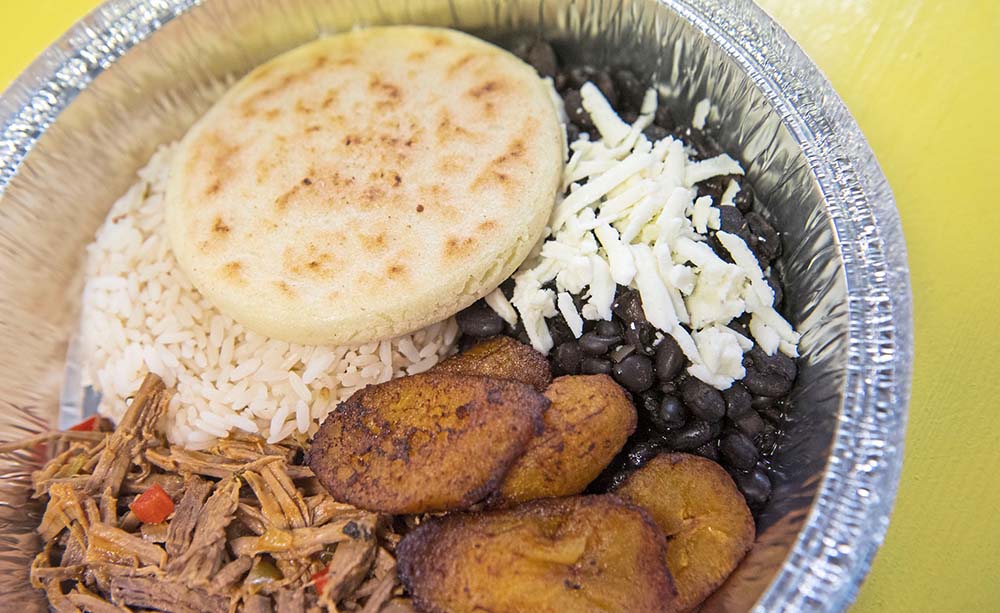
The family behind Arepittas — husband and wife Carlos Antela and Danielle Figueroa; her brother, Daniel Figueroa; and nephew, Jonathan Rosas — want to introduce Pittsburghers to their native cuisine. Key to that, Danielle explains (in Spanish, translated by her nephew), are arepas. It’s a dish so ubiquitous in their homeland, she says, that there’s a saying: “Venezuelans are born with an arepa under our arms.”
Arepas get their grit from corn flour, and the flatbread is either eaten alone or used as a tasty packaging. “It’s very versatile,” Danielle notes. “You can put anything inside it.” Arepas are eaten both as a side dish and a full meal. “It identifies our idiosyncrasy. It is part of our culinary culture and it is our letter of introduction as immigrants, and we share it with great pride with the whole world.”
Opened in January 2019, several years after the family immigrated to Western Pennsylvania from Caracas, Arepittas was born, Danielle says, of the need many Venezuelans feel when “they move from our country, they always try to show the good food that we have.”
While the restaurant marks a career shift for all four — Danielle was a lawyer in her home country and her brother a teacher — the food remains personal. Carlos’ parents ran restaurants in Venezuela for decades, while Daniel gave cooking lessons. “And Danielle, she has all the recipes from her grandmother, so we decided to mix all that together. And we have Arepittas,” Jonathan says.
The food: The national dish of Venezuela, Pabellon Criollo, is absolutely represented: shredded beef meets rice, black beans, sweet plantains and cheese, and comes with one arepa.
The very portable arepas have fillings to satisfy most diets. Go breakfast-y with chorizo and egg or keep it pescatarian with the Marinera, stuffed with shrimp, squid, scallops, octopus and mussels. Go full-carnivore with three pork choices or four red meat options, such as the grilled steak, avocado and white cheese Llanera. Or make it meatless with one of several vegetarian options.
Most everything is crafted from scratch, Danielle notes, from those flatbreads (made with P.A.N. flour) to the slow-cooked meats. That extends to the rest of the menu, which includes 10 varieties of empanadas, several tacos, tostones (fried green plantains, served with or without meat), cachapas (a corn pancake), tequeños (fried white cheese) and cachitos, a traditional bread filled with chopped ham.
The drinks: Check out the Typical Drinks of Venezuela, which include Chila Criolla (rice, whole and condensed milks and spices) and Coffee Lemonade (sugar cane, coffee syrup, green lemons).
412 Cherry Way; arepittas.com

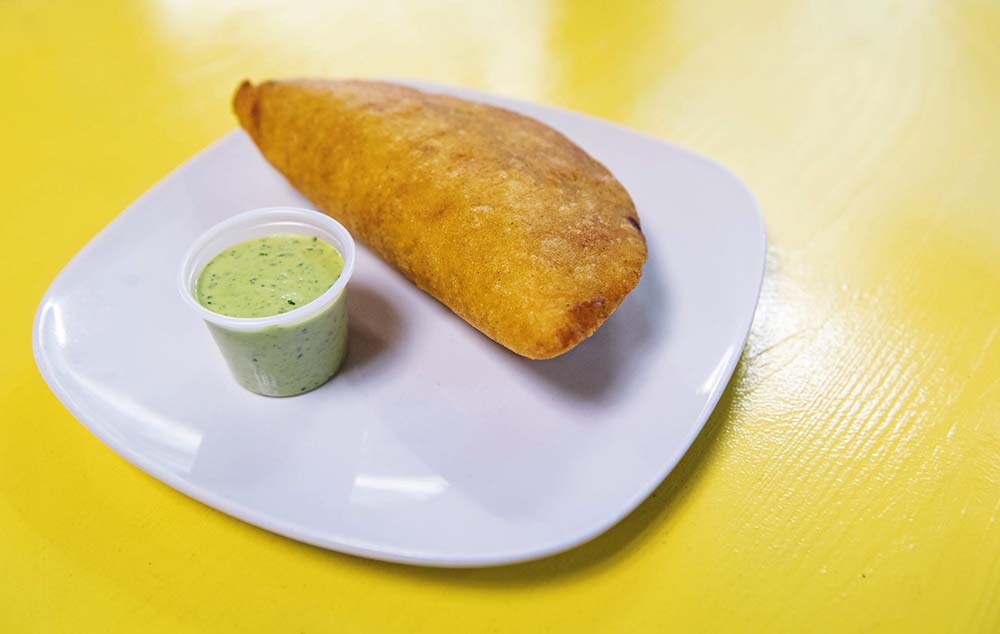



Con Alma co-owner Aimee Marshall took a glass half-full approach to the pandemic, using restrictions as a chance to experiment at the Latin fusion restaurant’s Downtown location. “We used to change four times a year, for the seasons, but once we went to paper menus for COVID times, we took that as an, ‘Oh, now we can really experiment with food more.’” The menu changes frequently, and so do the cocktail offerings.
As Downtown’s older sibling shifted (it’s now all-vegetarian) and thrived in Shadyside, the younger (but bigger) version was born in June. The trio behind it — general manager Marshall, chef Josh Ross and music curator John Shannon — took over the Roosevelt ground floor space that once housed Peter’s Allen Italian, expanding into a restaurant with a kitchen, Ross notes, “that’s like the entirety of [the space in] Shadyside.”
The food: Ross’ background in pan-Latin food (including time at rum-centric, now-closed Pirata, Downtown) informs much of the menu, and includes a staple entree, Lechon Asado (Cuban roast pork), bacalaitos (codfish fritters) and moqueca (a fish stew). Count on finding plantains in the mix regularly, too, Marshall notes.
Ross and Marshall met working at now-shuttered Asian-fusion PAN in Lawrenceville, and Asian-inspired dishes and flavors rotate in and out of the menu here. Marshall fondly recalls waffles paired with kimchi. The restaurant has a wok range, so Ross fires up pad Thai and fried rice, too.
“We love creating every week. It’s something we have in common with these jazz musicians. You’re going to hear them do standards, and it’s going to sound way different than another musician doing that standard. You’re also going to hear original compositions here,” Marshall says.
The drinks: Classics and originals hang out side-by-side on the cocktail menu, which Marshall oversees. You can order the Old Cuban (with spiced rum from Washington, Pa.’s Bliss), or one of the other clever combos like the No Pressure (mezcal, spiced pear agave, bitters, orange zest). House sangrias are also on offer, with the current two seasonally appropriate with carrot and butternut squash flavors. Marshall also curates a wine list with sips from Argentina, South Africa and Mexico.
“Here, it’s so much a mix of old and new. Some are classics that have been around forever, because they should, like a standard. And then there’s brand-new stuff that we just came up with,” she says.
The music: Finding talent in Pittsburgh is “not at all” difficult, Marshall says. If Con Alma is open, there’s jazz that evening. $10 per person during live music.
613 Penn Ave.; conalmapgh.com
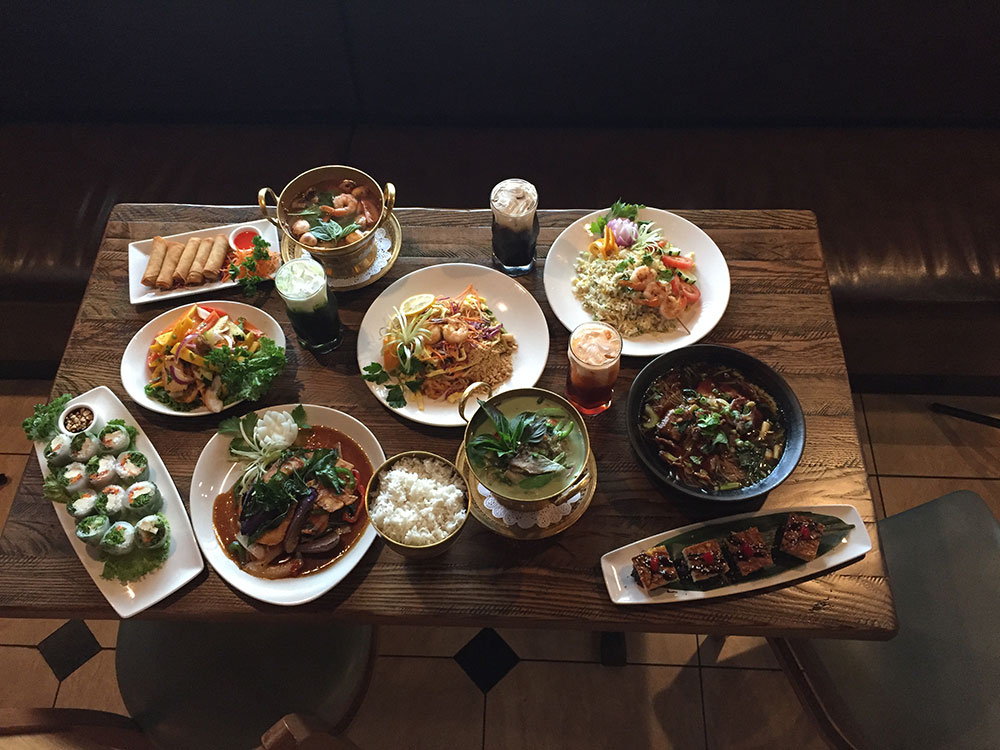
When you’re going out for Thai food, chances are good that Nicky’s is the first destination mentioned. The fact that it has grown into a local institution in the 14 years since Ratthasak “Nicky” Insawang opened his first location, the now-closed Nicky’s in Verona, speaks to the consistency of quality at the three locations. This cannot be an easy feat considering the enormity of the menu, which offers standards like Phad Thai alongside chef’s specials of Shiitake Duck and enough tofu-based options to make a bean curd lover shed a happy tear.
In August 2007, the menu was relatively limited, says general manager Dave Brunner, who has been with Nicky’s since about six months after the OG restaurant’s launch. But every few weeks, Nicky would present new specials, and “people would say, ‘When can I have this again?’ Through the years, the regular menu has just gotten larger and larger and larger, until what it is today.”
The Downtown Nicky’s, in the heart of the Cultural District, opened in 2012 — North Side and North Hills residents have Nicky’s, too — and nearly doubled its footprint in 2019 when it expanded toward Ninth Street, into space that now holds its bar. It’s a warm restaurant, with dark hardwood floors and merlot-colored walls, and a rarity among its Downtown brethren: Shutdowns aside, the Thai favorite more or less maintained its hours throughout, Brunner says, bolstered by takeout and outdoor dining. And, of course, its popularity.
The food: Unless you’re a regular, you might want to peruse the lengthy menu before you head in. Standards like Phad Sea Eaw (wide noodles with a sweet soy sauce) and Tom Yum soup (built on a lemongrass and lime broth) compete for attention with numerous curries (steamed kabocha with red curry), glass noodle salad with ground chicken, Sriracha Seafood noodle soup, specials including Tofu Tamarind and appetizers of pork dumplings.
Brunner notes that ordering off-menu is an option, too: “There’s stuff you can always get, even though it may not be on the menu at the time. Papaya salad or larb salad are ones that people always ask for.”
A tailored but still hefty lunch menu (entrees include soup or house salad) is served Mondays through Saturdays.
The drinks: Thai iced tea and coffee, full bar.
903 Penn Ave.; nickysthaikitchen.com

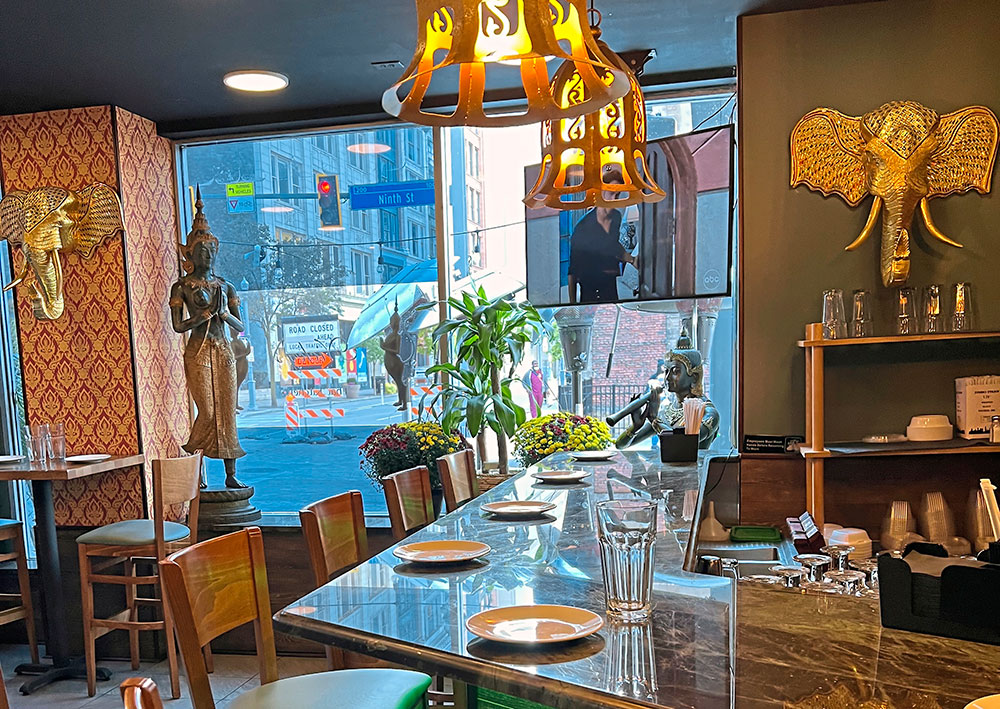
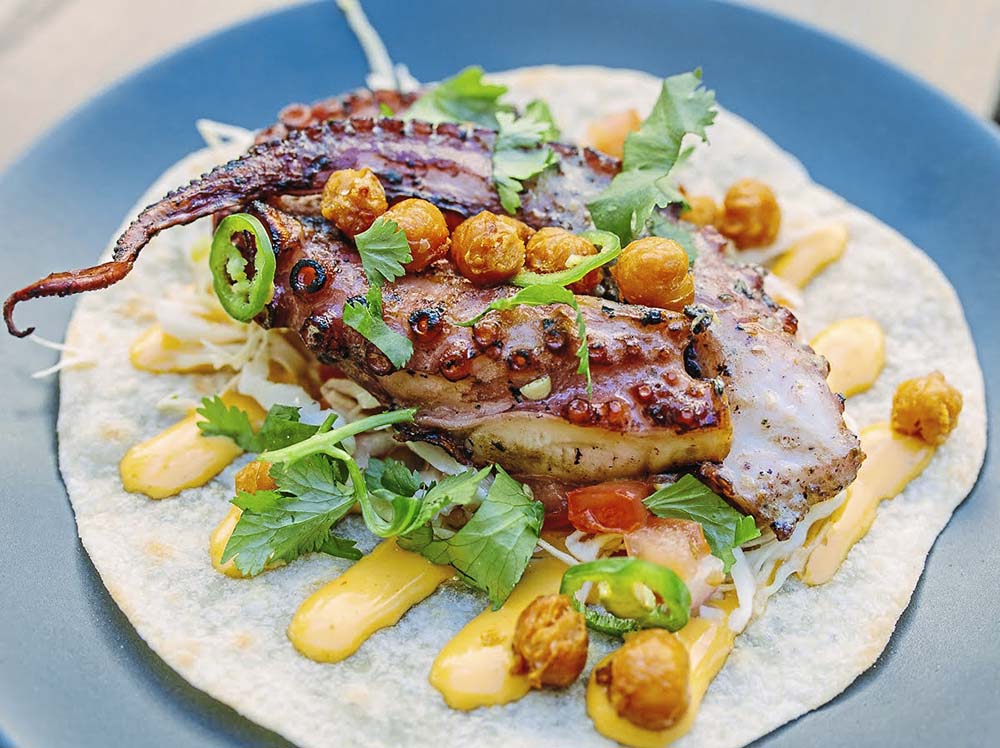
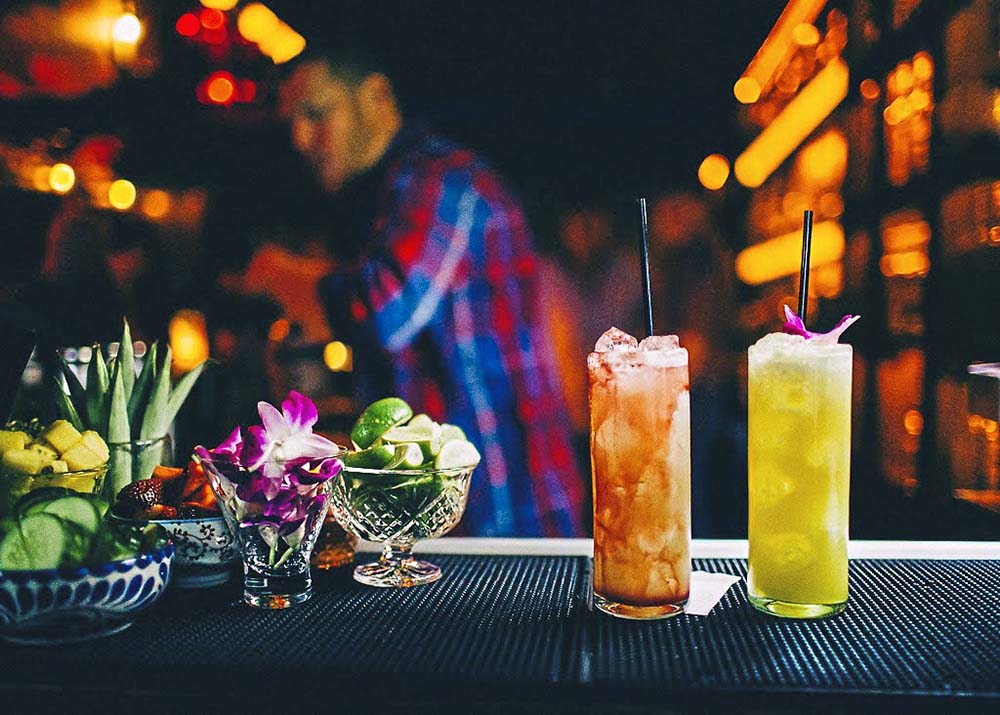

Täkō — that’s Japanese for octopus — starts with the fact that anything wrapped in a tiny tortilla can, in fact, be called a taco. At its core, Täkō fare is street fare, but only if that street sits in a pretty fancy ZIP code. Because not only do these tacos come with a flurry of fresh ingredients spun in inventive ways, they’re served in a lofty, double-decker space that also draws energy from a flurry of ideas and influences, with electric lime-green booths, red chandeliers, exposed I beams, and murals of the Last Supper and a giant, sci-fi mollusk. A feast for the eyes, a feast for the belly.
“Our concept is farm to street,” says Casey Henderlong, director of events for Richard DeShantz Restaurant Group, which in October opened a second Täkō location in Bakery Square. (Sister restaurant Gi-Jin, which draws on gin and sushi for inspiration, is nearby, as is the temporarily shuttered Meat & Potatoes.)
The food: This concept translates to a menu that changes with seasonal availability. Some items, such as ceviche, are reserved for the warmer months, but others are consistently represented. “You’ll always see an octopus taco,” Henderlong notes.
While there are influences from Mexican and Japanese cuisines, the flavor combinations stray far outside those borders. Currently, the Täkō taco journeys to the Mediterranean via fried chickpeas and an aioli heated up with harissa. A vegetarian taco is also a staple, and the fall version pairs maitake mushrooms with dukkah, a Middle Eastern spice mix. Seven other tacos round out the autumn offerings and include the Carnitas (pork shoulder topped with crunchy chicharrones and pickled red onion), and the Baja (beer-battered fish with coleslaw and a tomatillo marmalade).
You can’t (correction, shouldn’t) neglect the all-important wrapper, and Täkō makes its flour tortillas from scratch daily. They’re made traditionally, i.e., with lard, so corn tortillas are available if animal fat isn’t your thing. Vegetarians will also love the appetizers. Street corn is ever present — sometimes on the cob, sometimes in a bowl — and maitake reappears in a quesadilla. And get those house-made chips with fresh guacamole, unless you want to save room for a churro with miso-caramel and chili-chocolate sauces.
The drinks: The bar menu has pages (and pages) of tequila and mezcal varieties and a solid selection of rum. Numerous margaritas put the agave-based spirits to good use, from the classic prep to a spicy pineapple version. Other creative cocktails incorporate sweet, heat and/or sour, and you’ll find a couple of rotating frozen options, too.
214 Sixth St.; takopgh.com
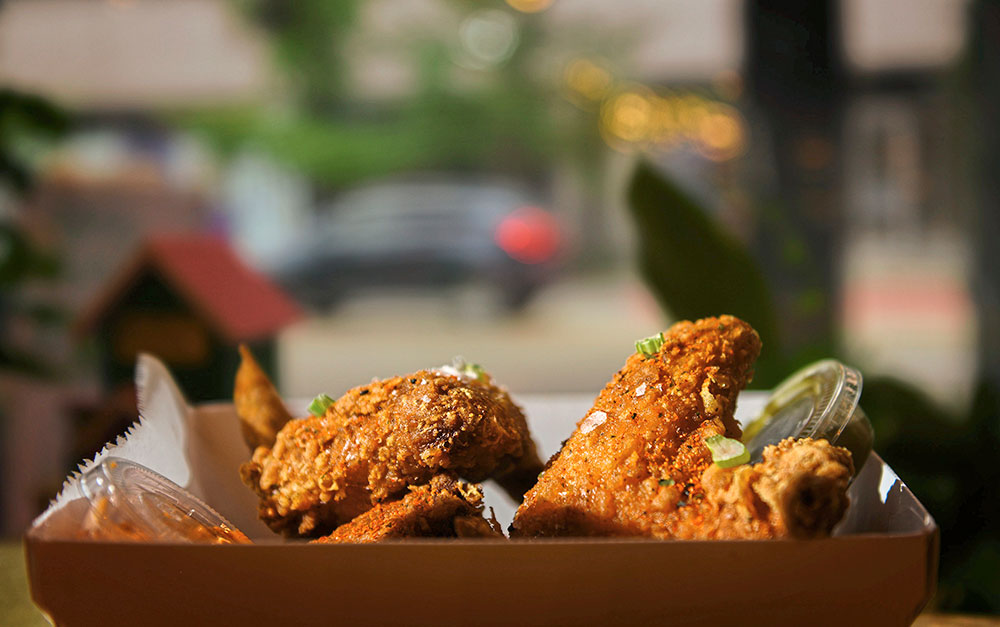
Talk to Edward Lai for even a couple of minutes about Bae Bae’s, and one word clearly calibrates the Korean restaurant’s compass: accessibility. When Lai was developing the concept with his co-owners — wife, Ashley Bae, and brother, Daniel Lai — the goal was to present food that people wanted to eat, that was healthy and flexible, and that traveled well.
Edward and Ashley moved to Pittsburgh a year before opening Bae Bae’s in 2017 and devised a curated menu built on “all the aspects that we want to incorporate into our food, which is, very balanced on the healthy side, and being sustainable and organic,” Lai says. “Sourcing as local as we can, and keeping with traditional flavors while putting a unique take on things.”
The food: With a focused menu, he notes, “we’re always able to add and change things.” One current experiment, built partly on Pittsburgh’s love of pierogies, involves dumplings for the winter season.
The mix-and-match menu asks patrons to first choose a base (rice, noodles with veggies, or greens). Of the proteins, there’s marinated ribeye, with beef from Jubilee Hilltop Ranch in Osterburg, Korean-fried chicken, spicy breast meat and fried tofu.
Or head to the “extras” part of the menu for wings with spicy mayo and honey wasabi, pork and cabbage dumplings and vegetable tempura. Bae Bae’s sources “as much local produce as possible,” which finds Lai heading to the Strip District, and, on occasion, his mom’s house. “My mom has her own garden, so we grab some stuff from her, too,” he says, laughing.
In 2020, Bae Bae’s expanded a couple doors down at 945 Liberty Ave., with Bae Bae’s Cafe, meant to be an even quicker option for lunch, with a menu of Vietnamese bánh mì sandwiches.
Bae Bae’s Kitchen has numerous tables, while the cafe has just a couple. Both are takeout-minded, if that’s what you’re looking for. “It’s not a traditional sit-down, it’s like upscale fast-casual. You’ll get your food in a to-go box, but it will be the same quality as an upscale restaurant,” he says. Again: accessibility.
The drinks: Boba tea, Thai tea, Vietnamese coffee, La Prima espresso beverages.
951 Liberty Ave.; baebaes.kitchen

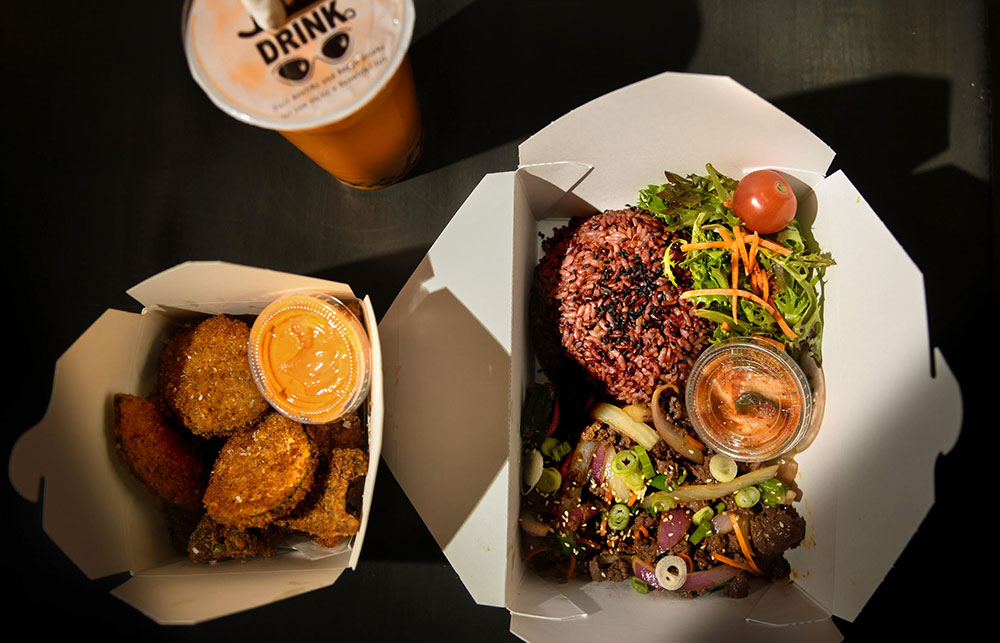
Polly Higgins
Steve Mellon
Ed Yozwick
Laura Malt Schneiderman
Advertisement
Advertisement